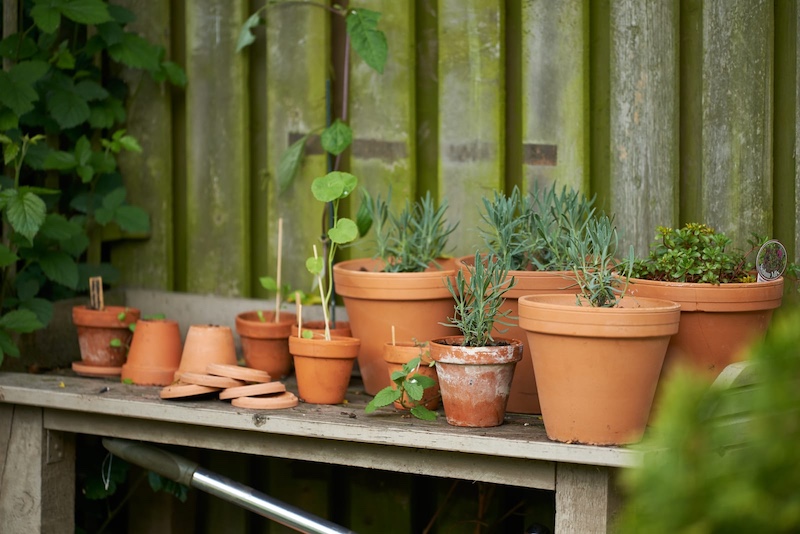Ah, the great debate of whether our beloved outdoor plants can thrive inside. As a plant lover and self-proclaimed “green thumb guru,” I’m here to tell you: it’s not as simple as packing up your backyard garden and plopping it on your windowsill. But, with a little knowledge, some adjustments, and maybe a pinch of luck, your outdoor plants can survive—and even thrive—inside. Let’s dig into how you can bring your leafy friends indoors without turning your home into a plant hospital.
What Outdoor Plants Can Actually Survive Inside?
First things first, not all outdoor plants are meant for indoor living. The outdoors and indoors are as different as, well, a cactus and a fern. Outdoor plants typically love the sun, the fresh air, and the freedom of nature, which makes their indoor existence a little tricky. However, there are some species that are adaptable enough to handle the transition. These include:
- Herbs: Lavender, basil, rosemary, and thyme are fantastic indoor plants. They love the sun, so give them a spot by a bright window, and you’ll have fresh herbs all year round!
- Succulents and Cacti: These desert dwellers are perfect for indoor life. As long as they get bright, indirect light, they’ll be content in your living room.
- Ferns: If you’re looking to add some greenery to a more shaded indoor area, ferns like Boston ferns or maidenhair ferns can thrive inside.
- Spider Plants: These low-maintenance plants do well inside, requiring indirect sunlight and a bit of water now and then.
Light, Light, Light!
When you bring an outdoor plant inside, the biggest challenge is often light. The sun is a vital part of any plant’s life, and while the light inside your home might not be the same as the great outdoors, you can still mimic it. Most outdoor plants need plenty of natural light, so choose a sunny spot near a south-facing window where your plant can soak up the rays.
If you’re trying to grow something that craves sunlight but lacks the ideal window spot, grow lights can be a game changer. These nifty little devices provide the full spectrum of light your plant needs to stay happy and healthy.
Temperature and Humidity: A Delicate Balance
Outdoors, plants experience a range of temperatures, from cool evenings to warm afternoons. Inside, however, the temperature tends to be more controlled, but that doesn’t mean your plants will feel at home just yet. Most outdoor plants do best in temperatures between 60-75°F (15-24°C), so make sure to keep your indoor space within this range.
Humidity can also be a challenge. Many outdoor plants, especially tropical ones like ferns and palms, love a bit of moisture in the air. If you live in a dry climate or have your heater cranked up, your plants might get a bit too parched. To fix this, consider using a humidifier, grouping your plants together to create their own little humidity zone, or occasionally misting them.
Potting and Soil Matters
Now, let’s talk about pots and soil. Outdoor plants are typically planted in garden soil, which is often heavier and denser than what indoor plants need. When bringing an outdoor plant inside, you’ll want to repot it in a lighter, well-draining potting mix that’s suited for indoor plants.
Make sure the pot has drainage holes. Indoor plants do not like their roots sitting in water, so a pot with drainage will help prevent root rot. Plus, a cute new pot is always a win—your plant gets a fresh start, and your home gets a bit more personality!
Watering
Watering is a tricky part of plant care that can either make or break your indoor garden. Outdoor plants are used to rain showers and natural water cycles, but inside, you’re the rainmaker. Overwatering or underwatering can both stress out your plant, so finding the balance is key.
A general rule is to let the top inch or so of soil dry out before watering again. Stick your finger in the soil to check—if it feels dry, it’s time to water. If it feels damp, wait a few more days. And remember, indoor air tends to dry out soil faster than outdoor environments, so keep an eye on your plants.
A Little TLC Goes a Long Way
While it’s true that some outdoor plants can survive indoors with a little care and attention, the transition isn’t always seamless. Don’t be discouraged if your plant seems a little sad at first—give it some time to adjust. Watch for signs like yellowing leaves (too much water), brown tips (not enough water or too much heat), or stretching toward the light (not enough light).
And remember, plants are people too (well, sort of). With the right care and a bit of patience, your outdoor friends can make a cozy home indoors, too!
In conclusion, yes, outdoor plants can survive inside—sometimes even thrive—if you provide them with the right environment. Whether you’re looking to move a few herbs indoors or give your ferns a second chance, with the proper adjustments, your indoor garden can be as lush and beautiful as the one outside.
